Aqueous enzyme assisted oil extraction from oilseeds
- Usage:Seed Oil, Seed Cooking oill Plant
- Type:Cold & Hot Pressing Machine, Seed Cooking oill Plant Plant
- Automatic Grade:Automatic
- Production Capacity:5-600TPD
- Voltage:380V
- Certification:ISO9001
- After-sales Service Provided:Engineers available to service machinery overseas
- Working mode:Automatic oill Production
- Final Product:RBD Seed Oil
- Refining process:Degumming,Decolorization,Deodorization,etc
Highlights. The emulsion resulting from AEE requires de-emulsification to separate the oil; when enzymes are used for this purpose, the method is known as aqueous enzymatic emulsion de-emulsification (AEED). In general, enzyme assisted oil extraction is known to yield oil having highly favourable characteristics.
Aqueous enzymatic process for oil and protein extraction
- Usage:edible oil
- Type:Cold & Hot Pressing Machine
- Automatic Grade:Automatic
- Production Capacity:98%-100%
- Voltage:380V/50HZ
- Power(W):22kw
- Dimension(L*W*H):48m*12M*15M(30TPD)
- Weight:10tons
- Certification:CE ISO
- After-sales Service Provided:Engineers available to service machinery overseas
- Product name:vegetable oill Production plant
- Raw material:SS304, carbon steel
- Application:rice bran, Edible, Edible,Edible...
- Function:making edible oil
- Character:the most professional manufactuer of Edible oil machine
- Advantage:36 years
- Warranty:365 days
- Color:as you require
- After-sales Service:Service Machine Overseas
- Technology:2016
Five commercial enzyme mixtures were evaluated for simultaneous oil and protein extraction from Moringa seed through enzyme‐assisted aqueous extraction (EAE). Protex 7L was found to be the best enzyme for highest oil (69.4%) extraction and protein (75.4%) recovery in the aqueous phase.
Aqueous enzyme assisted oil extraction from oilseeds
- Usage:Edible oil
- Type:Cold & Hot Pressing Machine
- Automatic Grade:Automatic
- Production Capacity:99%
- Voltage:200v/380V/400V
- Power(W):10-80KW
- Dimension(L*W*H):depends
- Weight:depends
- Certification:ISO&CE&BV
- After-sales Service Provided:Engineers available to service machinery overseas
- specifications:semi-continous soyabean oill Plant
- certification:CE ISO
Aqueous extraction processing (AEP) and enzyme assisted aqueous extraction processing (EAEP) are developed for protein extraction and release of the oil in a separate phase through processes such ...
Enzyme-Assisted Aqueous Extraction of Lipid
- Usage:RBD Cooking oill Plant
- Type:Cold & Hot Pressing Machine, RBD Cooking oill Plant
- Automatic Grade:Automatic
- Production Capacity:20T RBD Cooking oill Plant
- Voltage:380V
- Power(W):Based on RBD Cooking oill Plant capacity
- Dimension(L*W*H):Based on RBD Cooking oill Plant capacity
- Weight:Based on RBD Cooking oill Plant capacity
- Certification:CE,BV,ISO9001
- After-sales Service Provided:Engineers available to service machinery overseas
- Processing capacity:20TPD RBD Cooking oill Plant
- Material:Stainless,carbonless steel
- Raw Material:Cooking,Cotton,Cooking,etc
An improved lipid extraction process has been established for microalgal using enzyme-assisted aqueous extraction processing (EAEP), which mainly involved in sonication and enzyme treatment. As compared to cellulase, neutral protease and alkaline protease, significantly higher lipid recovery was achieved by snailase and trypsin.
Aqueous enzyme assisted oil extraction from oilseeds
- Usage:Camelia oill Production Equipment
- Type:Cold & Hot Pressing Machine, Camelia oill Production Equipment
- Automatic Grade:Automatic
- Production Capacity:50TPD Camelia oill Production Equipment
- Voltage:380V
- Certification:ISO9001
- After-sales Service Provided:Engineers available to service machinery overseas
- Cooking Oil Machinery Process:Pre-treatment,Solvent Extraction,Refining
- Material:Stainless and Carbonless Steel
- Raw Material:Vegetable Oil Suitable for Seed,Seed
- Pretreatment Process:Cleaning,Hulling,Breaking,Soften,Flaking,Puffing,Toasting
- Solvent Extraction Process:DTDC,Miscella Toasting and Stripping,Solvent Collecting,etc
- Refining Process:Degumming,Deacidification,Deordorization,Decoloration,etc
- Process Capacity:50TPD
- Service:Engineer Abroad Erection
- Packing:Frame and Container
The emulsion resulting from AEE requires de-emulsification to separate the oil; when enzymes are used for this purpose, the method is known as aqueous enzymatic emulsion de-emulsification (AEED). In general, enzyme assisted oil extraction is known to yield oil having highly favourable characteristics.

Enzyme-Assisted Aqueous Extraction of Lipid
An improved lipid extraction process has been established for microalgal using enzyme-assisted aqueous extraction processing (EAEP), which mainly involved in sonication and enzyme treatment. As compared to cellulase, neutral protease and alkaline protease, significantly higher lipid recovery was achieved by snailase and trypsin.
GET PRICE
Aqueous enzyme assisted oil extraction from oilseeds
Introduction Aqueous enzymatic extraction (AEE) is a promising method for the simultaneous extraction of oil and protein from oilseeds. The products are of superior quality and highly suited to human consumption.
GET PRICE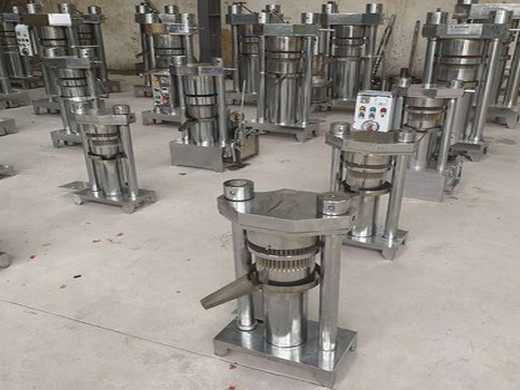
Environmental Impact Analysis of Soybean Oil Production
Environmental Impact Analysis of Soybean Oil Production from Expelling, Hexane Extraction and Enzyme Assisted Aqueous Extraction Abstract In the industry, expelling and hexane extraction are the two typical processes for soybean oil production. However, the low efficiency and hazardous chemical problem are the main issues for these two processes
GET PRICE
Green solvents and technologies for oil extraction
between solvent extraction (SE) and enzyme assisted extraction are given in Table 1. To know the role of enzymes on seed, the basic under-standing of the architecture of crop oilseeds is indispen-sable. Oil seed cotyledon consists of discrete lipid and protein bodies which contains oil and protein respec-tively.
GET PRICE
Using Enzymes for Oil Recovery from Edible Seeds
enzymes assisted aqueous extraction and membran tech nology for upgradation of protein quality, are the tech nologies that have a scope in the future2• According to oil technologists all around the world, it is clear that more land will not be available for oilseed crop production. On the other hand, more pressure can
GET PRICE
Enzyme-Assisted Aqueous Extraction of Peanut Oil
Enzyme-assisted aqueous oil extraction of peanut oil. (i) Use of a commercial enzyme preparation containing different proteases. Peanut seeds (10 g) were soaked in water for 2 h and then dehusked.
GET PRICE
Aqueous enzyme assisted oil extraction from oilseeds
Introduction Aqueous enzymatic extraction (AEE) is a promising method for the simultaneous extraction of oil and protein from oilseeds. The products are of superior quality and highly suited to human consumption.
GET PRICE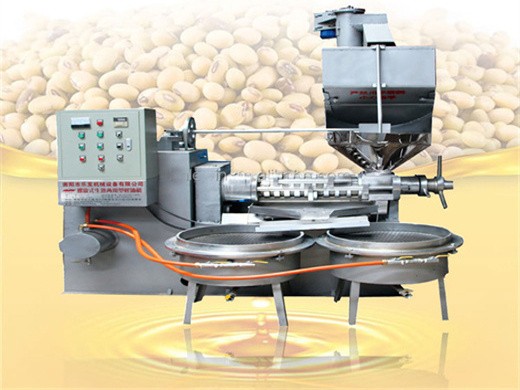
Aqueous enzyme assisted oil extraction from oilseeds
The emulsion resulting from AEE requires de-emulsification to separate the oil; when enzymes are used for this purpose, the method is known as aqueous enzymatic emulsion de-emulsification (AEED). In general, enzyme assisted oil extraction is known to yield oil having highly favourable characteristics.
GET PRICE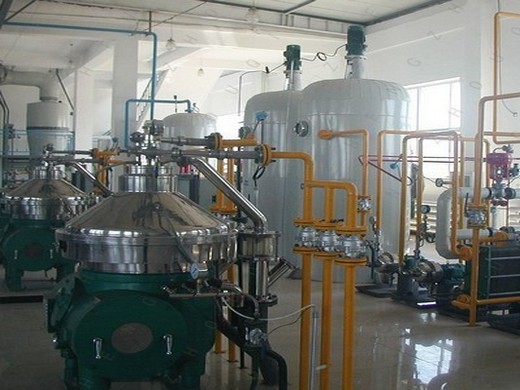
Techno-Economic Analysis of Integrated Enzyme Assisted
Aqueous oil extraction is a process which replace organic solvent, hexane is most used in solvent extraction, with water. Comparing to typical solvent extraction and expelling processes, the aqueous extraction has higher oil yield (over 80%) than expelling process and that is exempt the issues resulted from chemical loading and remaining.
GET PRICE
Environmental Impact Analysis of Soybean Oil Production
Environmental Impact Analysis of Soybean Oil Production from Expelling, Hexane Extraction and Enzyme Assisted Aqueous Extraction Abstract In the industry, expelling and hexane extraction are the two typical processes for soybean oil production. However, the low efficiency and hazardous chemical problem are the main issues for these two processes
GET PRICE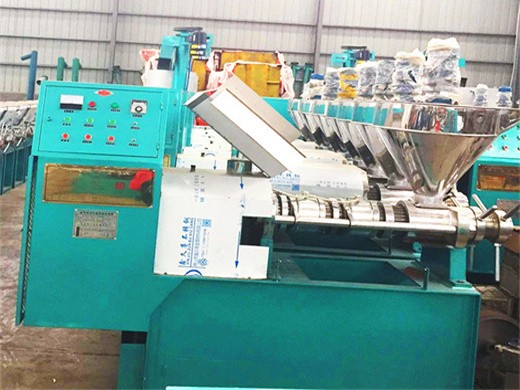
AQUEOUS ENZYMATIC SESAME OIL AND PROTEIN EXTRACTION
Abstract In the present work we evaluated five enzyme-mixtures (Protex 7L, Alcalase 2.4L, Viscozyme L, Natuzyme, and Kemzyme) for their effectiveness in extracting the oil and protein recovery from sesame seeds during an enzyme-assisted aqueous extraction (EAAE) process. Alcalase 2.4L was found to be the best for attaining a high oil yield (57.4% of the total oil content in the seed), whereas ...
GET PRICE
Aqueous Enzymatic Extraction of Oil and Protein
After the of hexane to extract edible oil from oilseeds, aqueous peanut seeds were roasted at 190 °C for 20 min, with a (enzymatic) extraction processing has gained attention. seeds-to-water ratio of 1:5, an enzyme concentration of This alternative process uses an aqueous (enzymatic) 2%, and an incubation time of 3 h, the yields of free oil and extraction of the comminuted materials, followed by a protein hydrolysates were 78.6 and 80.1%, respectively.
GET PRICE
Green solvents and technologies for oil extraction
between solvent extraction (SE) and enzyme assisted extraction are given in Table 1. To know the role of enzymes on seed, the basic under-standing of the architecture of crop oilseeds is indispen-sable. Oil seed cotyledon consists of discrete lipid and protein bodies which contains oil and protein respec-tively.
GET PRICE
Green solvents and technologies for oil extraction
In this review, green solvents and technology like aqueous assisted enzyme extraction are better solution for oil extraction from oilseeds. Enzyme mediated extraction is eco-friendly, can obtain higher yields, cost-effective and aids in obtaining co-products without any damage.
GET PRICE
Aqueous and Enzymatic Extraction of Oil and Protein
Aqueous (AEP) and enzyme-assisted aqueous extraction processes (EAEP) are environmentally friendly strategies that enable the simultaneous extraction of oil, protein, and carbohydrate from many oil-bearing materials without the use of flammable and neurotoxic hexane [17,18].
GET PRICE
Aqueous enzyme assisted oil extraction from oilseeds
The emulsion resulting from AEE requires de-emulsification to separate the oil; when enzymes are used for this purpose, the method is known as aqueous enzymatic emulsion de-emulsification (AEED). In general, enzyme assisted oil extraction is known to yield oil having highly favourable characteristics.
GET PRICE
Aqueous enzyme assisted oil extraction from oilseeds
The emulsion resulting from AEE requires de-emulsification to separate the oil; when enzymes are used for this purpose, the method is known as aqueous enzymatic emulsion de-emulsification (AEED). In general, enzyme assisted oil extraction is known to yield oil\ud having highly favourable characteristics.
GET PRICE
Aqueous Enzymatic Extraction of Buriti () Oil: Yield
Enzyme-assisted aqueous extraction is considered an emerging green technique that has been applied to different oilseeds. Objective: This study aimed to study the enzymatic aqueous extraction process of buriti oil using a central composite rotatable design (CCRD) combined with the response surface methodology aiming to obtain higher yield and antioxidant compounds in the oil.
GET PRICE
Aqueous Enzymatic Extraction of Oil and Protein
After the of hexane to extract edible oil from oilseeds, aqueous peanut seeds were roasted at 190 °C for 20 min, with a (enzymatic) extraction processing has gained attention. seeds-to-water ratio of 1:5, an enzyme concentration of This alternative process uses an aqueous (enzymatic) 2%, and an incubation time of 3 h, the yields of free oil ...
GET PRICE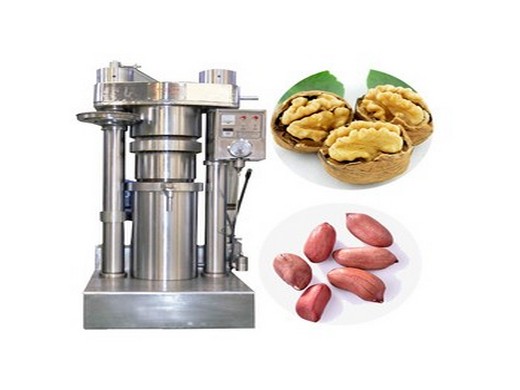
Enzyme-assisted aqueous extraction of peanut oil, Journal
Enzyme-assisted aqueous extraction of oil from oilseeds is a relatively recent technique. In the present study, peanut oil was extracted under optimized aqueous extraction conditions using Protizyme™, which is predominantly a mixture of acid, neutral, and alkaline proteases.
GET PRICE
Copy ENZYME ASSISTED - Science
In this study, onion oil was extracted with different types of enzymes (amylase, cellulase and amylase+cellulase), extraction time (8, 16 and 24 hours) and temperature (35oC, 50oC and 65oC). The highest oil recovery (18.38%) was obtained by sample extracted with amylase+cellulase after 16 hours at 65˚C.
GET PRICE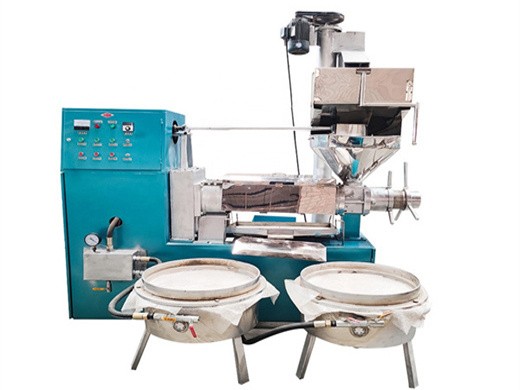
Aqueous enzymatic extraction of peanut oil and protein
The aqueous enzymatic extraction method was used to extract oil and protein hydrolysates from peanut. First, alkaline protease was chosen after screening of different enzyme preparations, and then by using single-factor test and orthogonal test the process parameters were optimized.
GET PRICE










